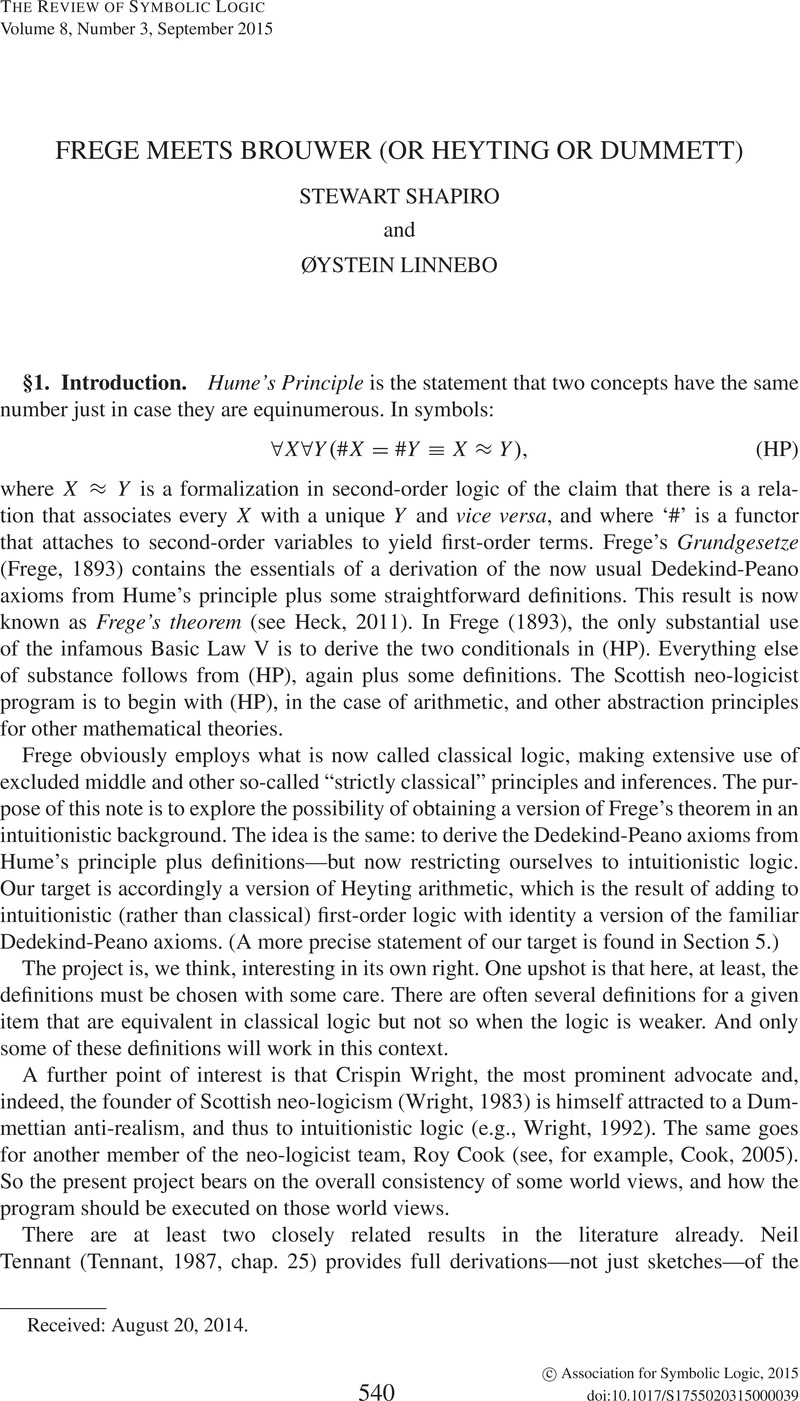Article contents
FREGE MEETS BROUWER (OR HEYTING OR DUMMETT)
Published online by Cambridge University Press: 13 February 2015
Abstract

- Type
- Research Article
- Information
- Copyright
- Copyright © Association for Symbolic Logic 2015
References
BIBLIOGRAPHY
- 2
- Cited by


